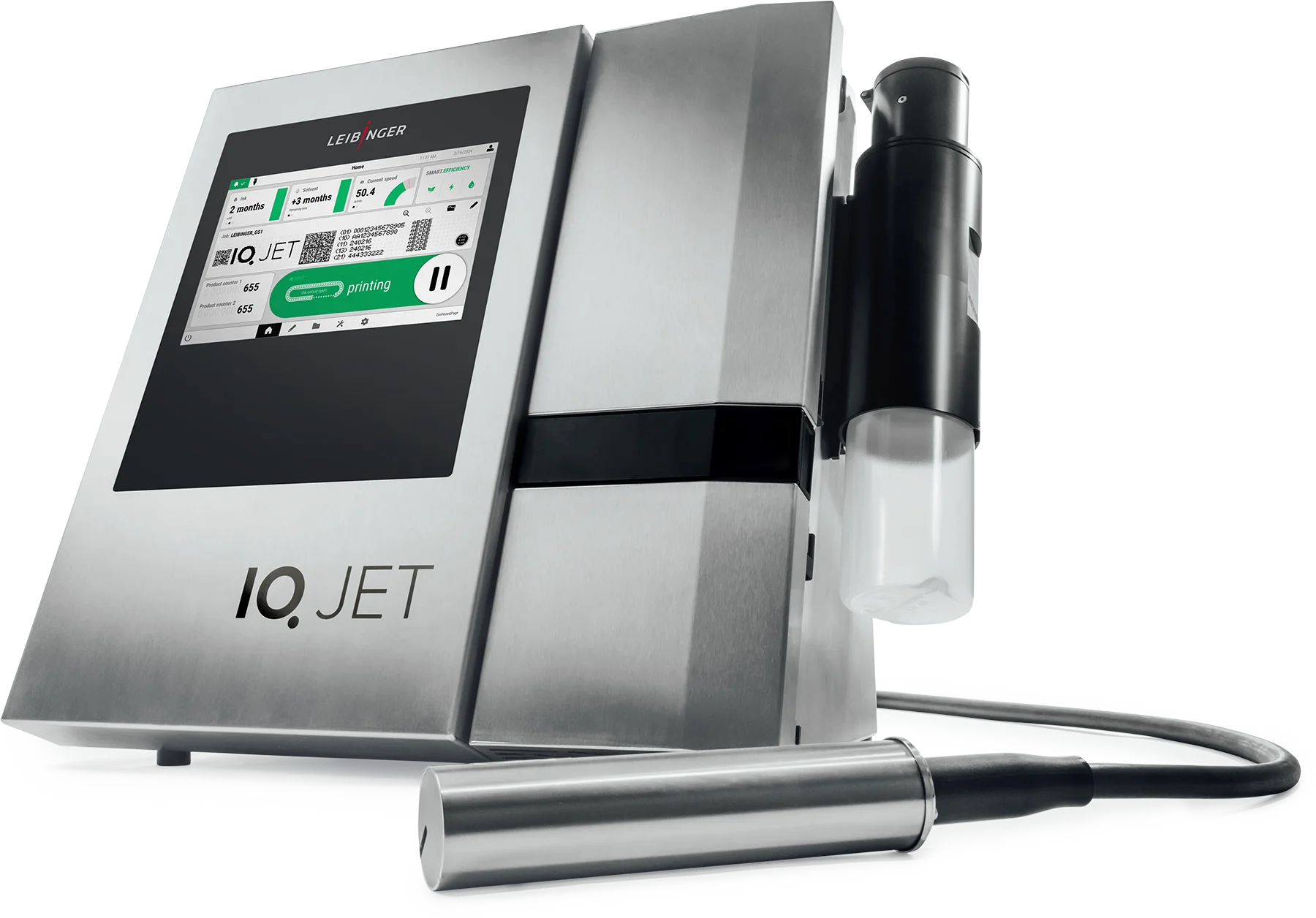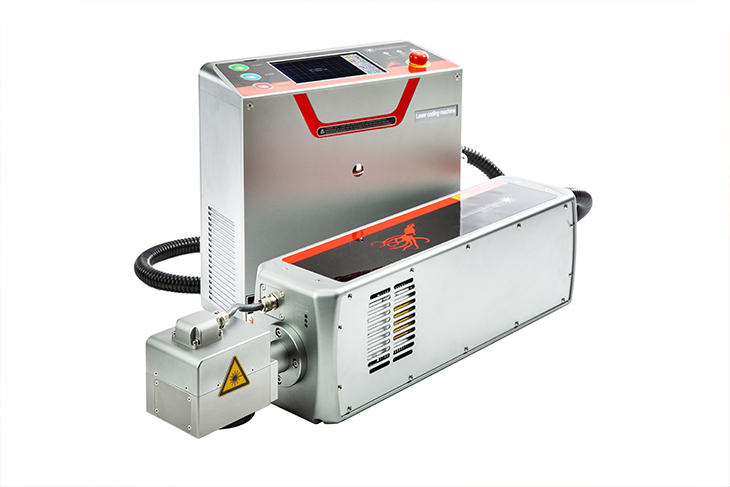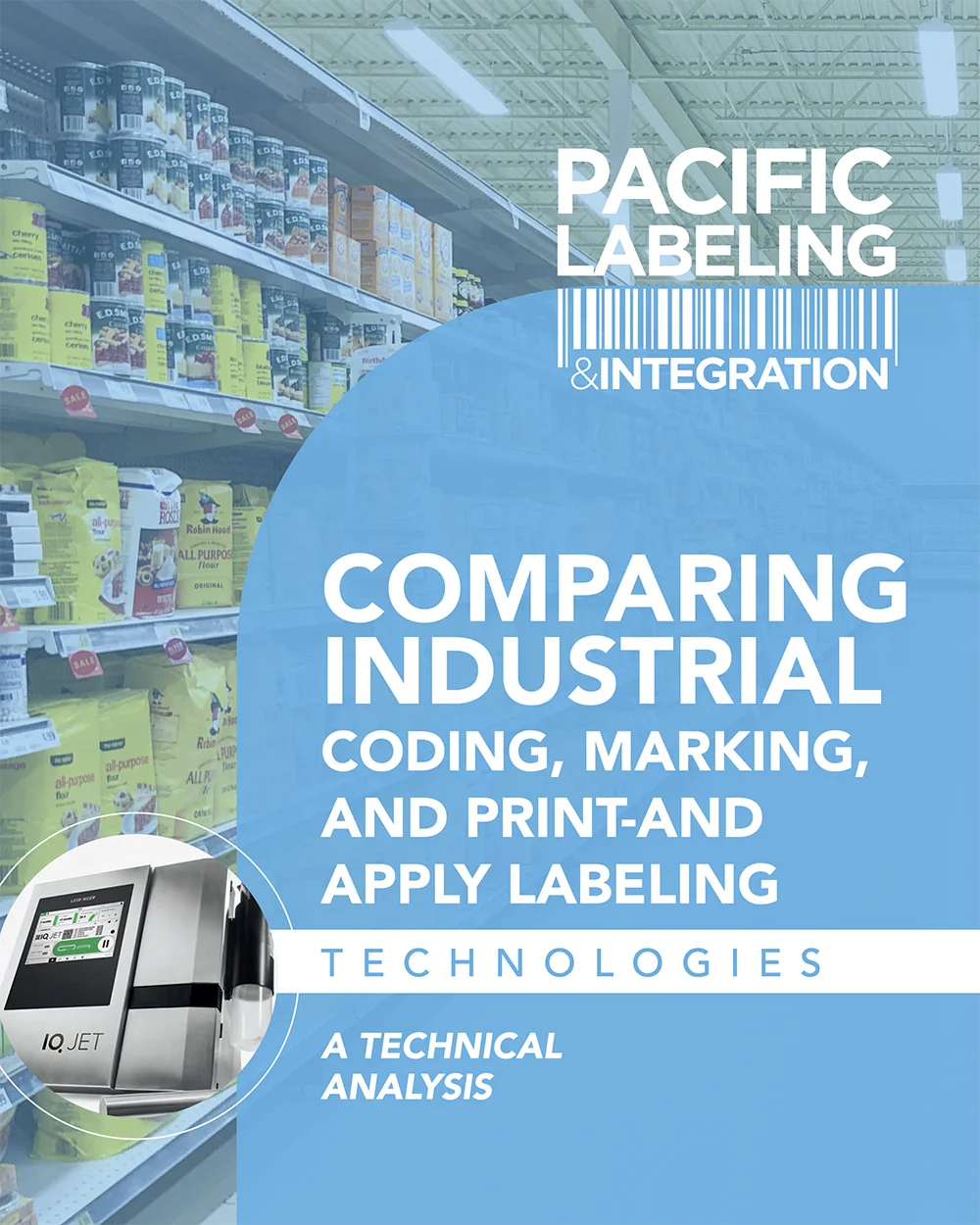
Introduction
Industrial manufacturing and packaging require precise product identification, traceability, and compliance to meet regulatory standards and enhance supply chain efficiency. Selecting the right coding, marking, or labeling technology depends on substrate type, print durability, resolution, cost-effectiveness, and maintenance needs.
This white paper provides an in-depth technical comparison of the following technologies:
- Thermal Inkjet (TIJ) – Norwix, Squid Ink
- Continuous Inkjet (CIJ) – Leibinger, Squid Ink
- Laser Marking – Squid Ink
- UV LED Curing – Squid Ink
- Print-and-Apply Labeling – Nita Labeling, Label-Aire using SATO and Zebra print engines
Each method is evaluated based on its technical specifications, ideal applications, advantages, and limitations, followed by a comprehensive comparison matrix for quick reference.
1. Direct-to-Product Coding & Marking Technologies
1.1 Thermal Inkjet (TIJ) – Norwix, Squid Ink
How It Works
Thermal Inkjet (TIJ) technology utilizes micro-resistor heating elements that generate heat pulses to vaporize ink, creating controlled expansion that forces droplets through microscopic nozzles onto the substrate. The process allows high-resolution, sharp-edged characters and barcodes with crisp contrast.
Technical Specifications
- Print Resolution: Up to 600 dpi
- Print Speed: Up to 100 meters per minute
- Ink Types: Water-based, solvent-based, UV-curable inks
- Drop Volume: 1–10 picoliters (pl), enabling fine detail printing
- Nozzle Diameter: 10–30 µm, controlling droplet formation
- Maintenance: Minimal – Printhead is replaced with each cartridge
Best Applications
✔ High-resolution carton coding for food, beverage, and industrial goods
✔ Pharmaceutical & medical packaging requiring traceability
✔ Logistics & warehousing (sharp, scannable barcodes)
Advantages
✅ High-resolution printing for barcodes and small text
✅ Low maintenance – Printhead is integrated into each cartridge
✅ Compact and modular – Easily integrates into packaging lines
Disadvantages
❌ Higher ink cost per print due to cartridge-based system
❌ Lower speed compared to CIJ in high-volume applications
❌ Limited adhesion on non-porous surfaces without specialized inks
1.2 Continuous Inkjet (CIJ) – Leibinger, Squid Ink
How It Works
CIJ printers generate a continuous stream of electrically charged ink droplets by applying a high-frequency pulseto a pressurized ink flow. Charged droplets are deflected by electrostatic plates, directing them onto the substrate, while unused ink is recirculated.
Technical Specifications
- Print Resolution: 60–300 dpi
- Print Speed: Over 300 meters per minute
- Ink Types: Solvent-based, MEK-based, pigmented inks
- Nozzle Diameter: 40–70 µm, controlling droplet size
- Ink Recovery System: Leibinger Sealtronic® prevents nozzle drying
Best Applications
✔ Beverage & food packaging (bottles, cans, flexible packaging)
✔ Extrusion marking (cables, pipes, and automotive parts)
✔ Pharmaceutical compliance coding (expiration dates, batch numbers)
Advantages
✅ High-speed printing, even on irregular and curved surfaces
✅ Compatible with non-porous substrates (glass, plastic, metal)
✅ Self-cleaning printheads (Leibinger’s Sealtronic® technology)
Disadvantages
❌ Requires solvent-based ink management
❌ Lower resolution than TIJ – not ideal for high-detail barcodes
❌ Higher maintenance requirements due to ink recirculation system
1.3 Laser Marking – Squid Ink
How It Works
Laser marking modifies the material surface using a focused, high-intensity laser beam, which vaporizes, ablates, or induces a chemical color change to create permanent marks.
Technical Specifications
- Laser Types: CO₂, Fiber, UV
- Marking Speed: Up to 2,000 characters per second
- Resolution: Up to 1,000 dpi
- Substrates: Metals, plastics, glass, ceramics
- Maintenance: Minimal, as no consumables are needed
Best Applications
✔ Automotive, aerospace, and medical device part marking
✔ Counterfeit prevention in high-value products
✔ Food & beverage (permanent expiration date marking on glass bottles)
Advantages
✅ Permanent, tamper-proof markings
✅ No ink, solvents, or consumables
✅ High-speed, non-contact operation
Disadvantages
❌ High initial investment
❌ Not suitable for heat-sensitive substrates
❌ Requires fume extraction for plastics
1.4 UV LED Curing – Squid Ink
How It Works
UV LED curing instantly cures UV-reactive ink upon exposure to ultraviolet light, resulting in immediate bonding to non-porous surfaces.
Technical Specifications
- Print Resolution: Up to 1,200 dpi
- Print Speed: Up to 200 meters per minute
- Ink Type: UV-curable ink
- Substrates: Coated cartons, plastic, flexible packaging, and glass
- Maintenance: Minimal, as UV ink does not dry in the printhead
Best Applications
✔ Luxury packaging & cosmetics
✔ Food-grade applications with low-migration inks
✔ Durable branding on plastics and glass
Advantages
✅ Immediate drying with high contrast
✅ Superior adhesion on non-porous surfaces
✅ Eco-friendly, emitting low VOCs
Disadvantages
❌ Higher cost of UV-curable inks
❌ Requires UV LED curing lamps, increasing power consumption
❌ Limited to UV-reactive materials

2. Print-and-Apply Labeling – Nita Labeling & Label-Aire
| Factor | TIJ | CIJ | Laser | UV LED Curing | Print-and-Apply |
|---|---|---|---|---|---|
| Print Resolution | Up to 600 dpi | 60–300 dpi | Permanent | 1,200 dpi | 600 dpi |
| Print Speed | Moderate | High | High | High | Moderate |
| Substrates | Porous & semi-porous | Porous & non-porous | Metal, plastic, glass | Glossy, non-porous | Any material (labels) |
| Consumables | Ink cartridges | Ink & solvents | None | UV-reactive ink | Labels, ribbons |
| Maintenance | Low | Moderate | None | Low | Low (printhead wear) |
| Cost | Low upfront | Higher upfront | High upfront | Higher upfront | Moderate |
3. Conclusion: Expert Solutions from Pacific Labeling & Integration
Choosing the right coding, marking, or labeling technology is critical to ensuring production efficiency, regulatory compliance, and long-term cost-effectiveness. Each method has its own strengths and trade-offs, making it essential to work with experts who understand both the technical specifications and real-world applications of these solutions.


